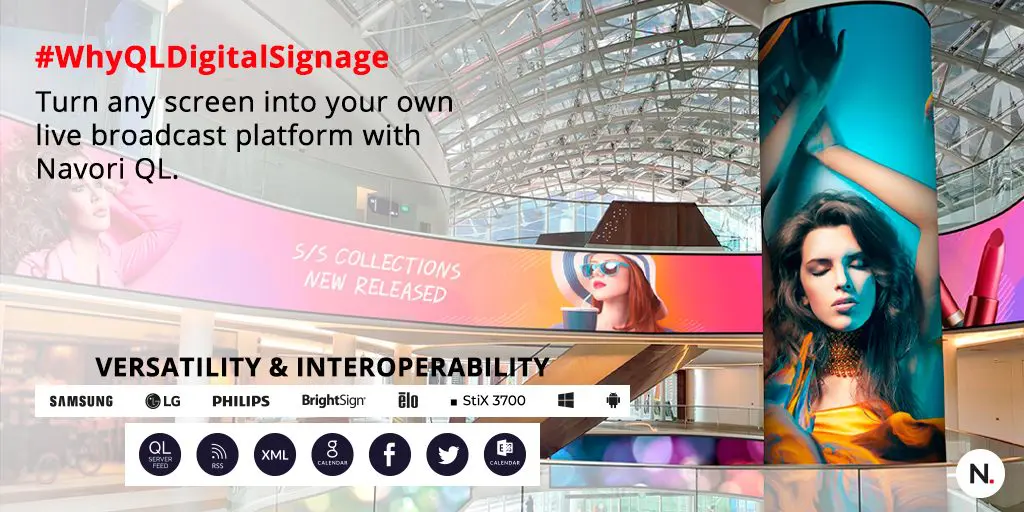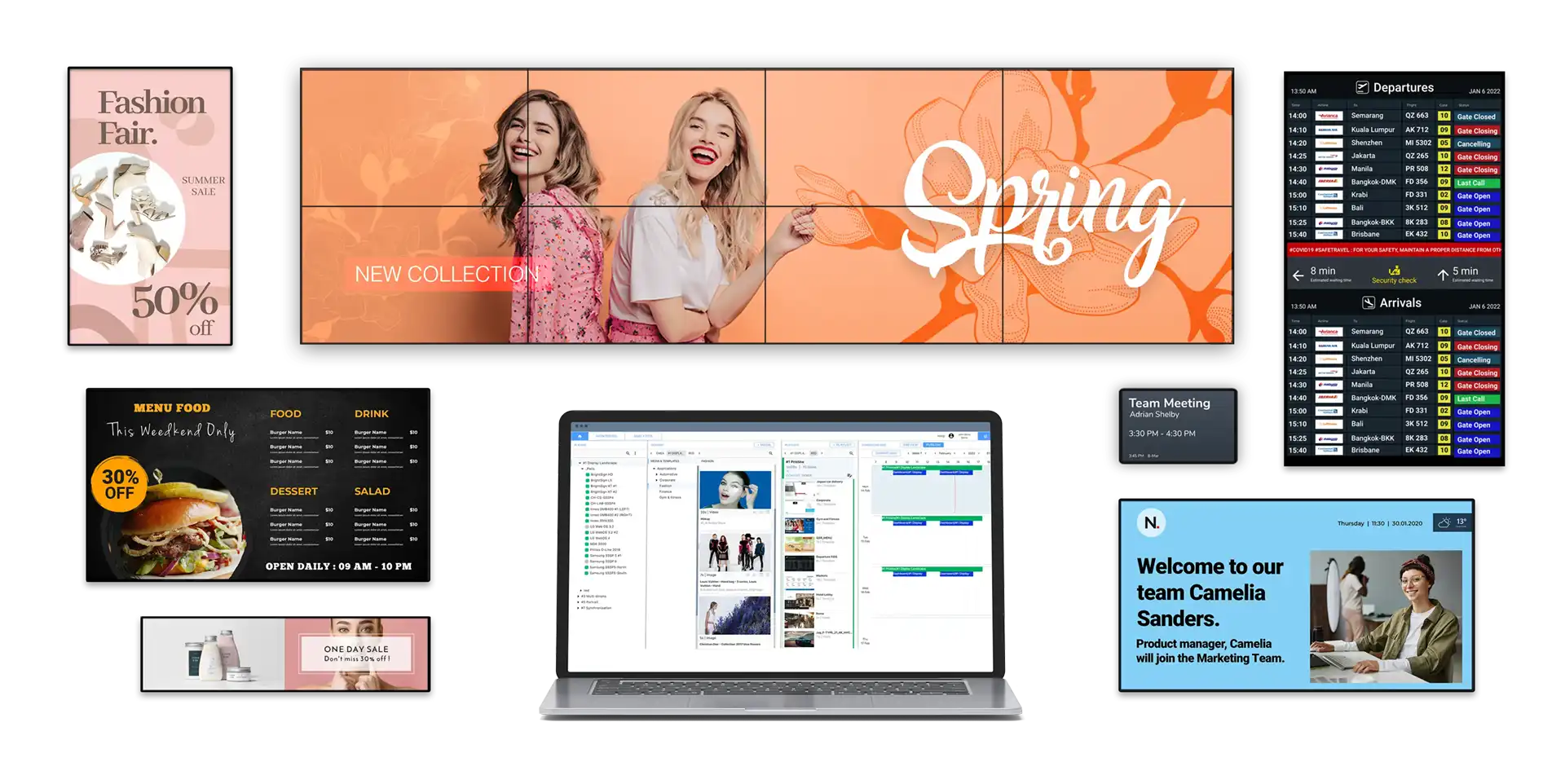Top Digital Signage Software
Digital signage has been around for about 15 years and since then we have seen an explosion of hardware and software products developed specifically for this market. In fact, digital signage has become so popular, the lines are sometimes blurred between products designed for consumer entertainment and products intended for commercial use.
Industry observers will often point to the growing popularity of consumer-grade Android standalone player devices which can be found in every online store with many “freeware” apps that are promoted as digital signage software. The casual user can’t distinguish between a true digital signage software product that is engineered to provide reliable content playback on a 24/7 basis and a low-end software that is unstable and unsuited for long-term use. It’s virtually impossible to tell by looking at online ads or by reading web searches.
This requires a bit of research, so let’s get started.
Consumer vs. professional-grade software
In the world of digital signage software platforms, you will find hundreds of products that aim to perform basically the same function: screen scheduled content on one or more standalone player devices connected to a flat panel display. This is literally the description of every digital signage platform out there. However, just as with all things in life, some of these products can be quite good while the rest aren’t really worth your time.
Interpreted or web-based languages
You must look for features that are normally found in professional-grade software, and consider how the software is made. Most of the digital signage platforms on the market are coded using interpreted or web-based languages. At first glance, there’s nothing wrong with that. Interpreted languages are basically used for thousands of software products and it’s usually easier to code using that method. Also, there are lots of developers who are familiar with interpreted languages so it’s easier to find people to write software. However, interpreted languages have many drawbacks. First, they don’t have direct access to the player hardware’s components. Second, they aren’t as stable or reliable as the alternative coding method.
Many digital software products are still written using Adobe Flash and JavaScript. These interpreted languages are commonly used on the web but they are being slowly replaced because they are inefficient and often create security risks. It’s a known fact that Flash has been a target of hackers for years and the product is about to be discontinued by Adobe as new web technologies like HTML5 start replacing Flash. Digital signage running on this platform will need to be completely rewritten in another language and it’s quite possible these products will end up coding in a combination of HTML5, JavaScript, or other web-centric technology. These are still interpreted languages so there won’t be any real benefit to end-users.
Native language programming
Professional-grade digital signage platforms are based on native language programming. This method has access to all of the hardware’s features, including the graphics processing unit (GPU). With native software, you get better performance, more fluid content playback, and a more reliable media player. These are all the characteristics that everyone looks for in this type of application.
Digital signage players must play reliably year-round, 24/7, and perform at a very high standard. It’s a situation where stuttering video clips and blank frames are simply not tolerated, especially when customers are paying for advertising space or when a screen welcomes visitors to a venue.
Native software is the most efficient because it operates at a lower level than software coded with an interpreted language. These facts aren’t well known because no one really talks about them.

User interfaces that people like to use
What good is a reliable standalone player if end-users don’t like the CMS software interface (aka dashboard)? There are as many digital signage UIs as there are products. Your challenge is to find one that meets your end-users requirements. Most end-users look for:
- Ease of use
- Flexibility
- A Responsive UI
- Reliability
- Security
Dashboards come in two “flavours”. There are traditional locally installed software applications and web-based dashboards that require no local software on the end-user side.
Locally installed software offers some nice advantages. These apps tend to be reliable and they use local databases on each end-user PC. End-users don’t need a constant internet connection and some offer powerful features such as content previews. On the other hand, locally installed software requires maintenance and you actually need to install the software on each and every computer you wish to use to manage your digital signage network. This can lead to other issues such as how many operating systems and hardware platforms are supported.
Web-based digital signage CMS solutions are clearly the modern trend. There is no local software to install so anyone can access the system from any location. When the CMS server gets upgraded, every user gets the new features because the software is accessed remotely and managed centrally. This provides many savings over the long run as there is less software to maintain. Another benefit is most web-based dashboards can be accessed from any operating system or hardware platform that supports web browsers. Some products may require plug-ins to operate but the trend is to move to HTML5 environments to ensure the best user experience and the widest support.
Modern, professional signage software has mostly migrated to the web for these reasons.
Back-end servers that scale
The digital signage server software is the brains of the operation. With the migration to web-based solutions and the popularity of virtualized server hardware, the current-generation server software will rely on some type of distributed Navori database for reliability and scalability.
Early-generation products that still rely on local database engines should be avoided except for the smallest of deployments. Local databases only support single users and are limited to the resources of the hosting computer. In many cases, this is the end user’s PC that also serves as a content creation station and runs the dashboard, not to mention a whole bunch of other software. These first-generation software products are not designed for scalability or for multiple users. Often these software products get installed on a shared PC that users access using some type of remote access software. This isn’t a true alternative to a multi-user application where each user has secure and isolated access to a shared Navori database.
Speaking of databases. As digital signage networks grow, so does the importance of having a scalable database engine with modern architecture. Otherwise, you soon notice the CMS slowing down as more users, content, and players are added. There always comes a point where an inefficient database engine becomes an impediment to productivity. You notice this when end-users constantly log off the server or if they have to schedule their activities when there are fewer people using the system.
The top digital signage software products are designed to scale across multiple physical or virtual servers. With these solutions, databases can be located on different servers than the CMS itself for better performance and increased security. The best software will also support content distribution networks (CDN) and server load balancing.

To summarize…
Here are the features that you should look for when researching top digital signage platforms.
- An efficient, native digital signage player software.
- Digital signage player software that features a watchdog and automated alerts.
- Digital signage player software that is efficient and doesn’t require high-end devices.
- Player software that can be updated automatically without direct access to the playback device.
- Player software that supports multiple operating systems (Microsoft Windows, Google Android)
- Player software that supports multiple hardware types (PC, tablet, standalone player devices, system on a chip equipped displays).
- CMS dashboard that is web-based for multi-user installations.
- A digital signage CMS that is multi-featured with no local software required.
- A digital signage CMS that supports multiple hardware and operating systems.
- A CMS server that is efficient and scalable.
- Supports modern databases (SQL).
- Supports physical and virtual servers.
- Supports multiple users, regardless of their location.
- Supports distributed servers, load balancing, and content delivery networks.
